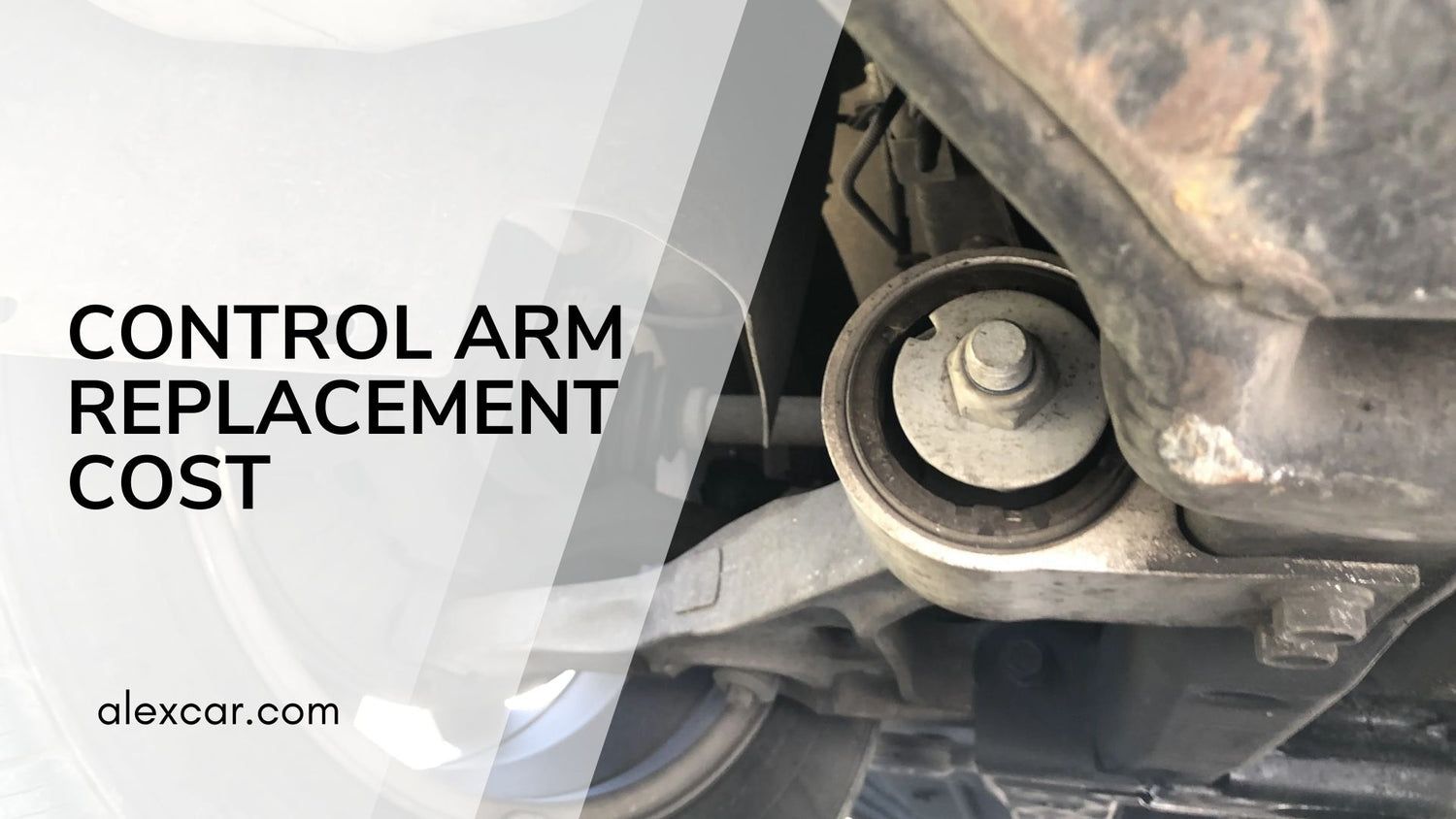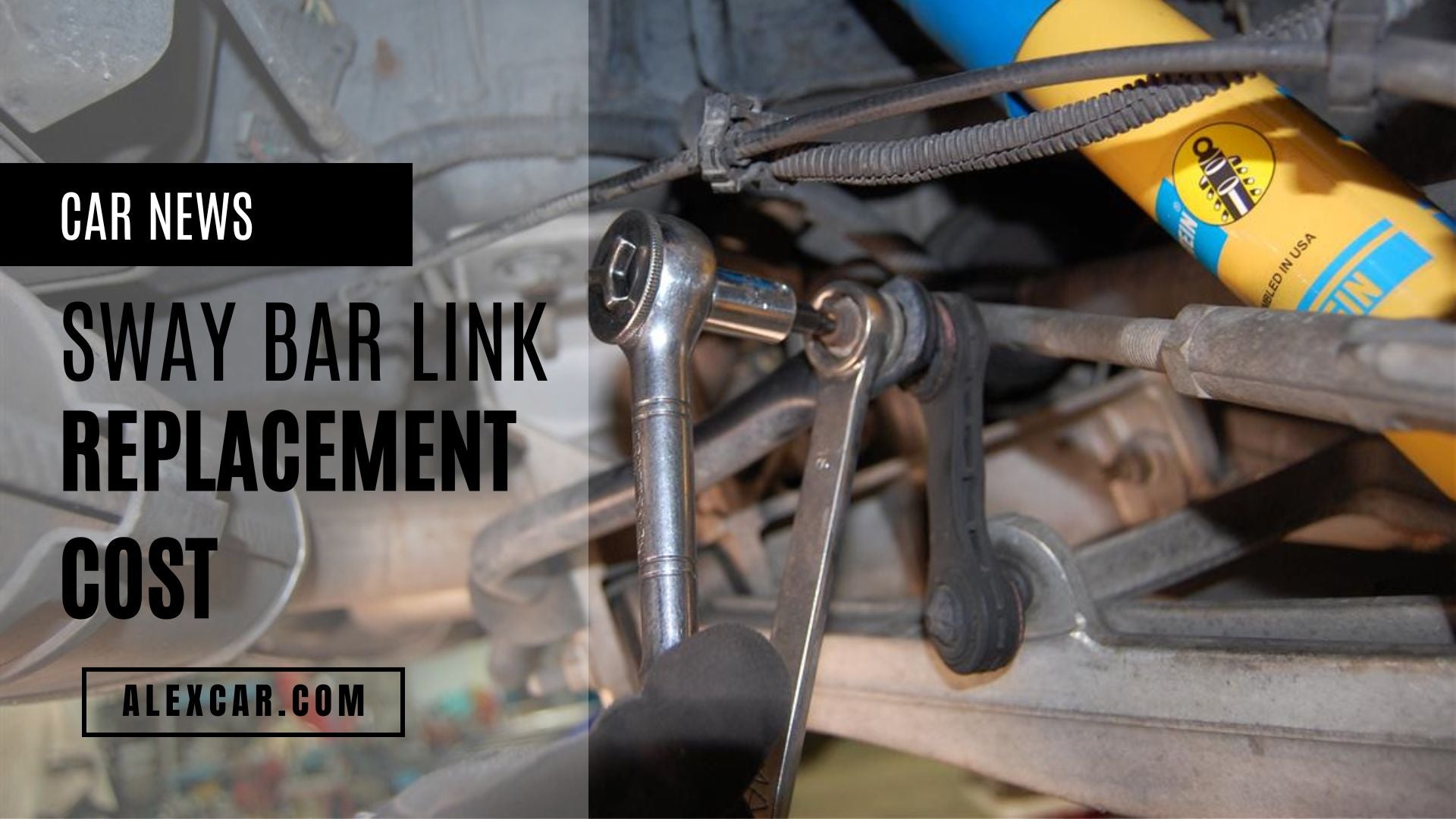As a car owner, it's crucial to stay on top of your vehicle's maintenance to ensure a safe and smooth driving experience. One important component that may require attention over time is the control arm. If you suspect your car needs a control arm replacement, you're likely wondering about the associated costs. In this comprehensive guide, we'll dive into the world of control arm replacement costs, providing you with the information you need to make informed decisions about your vehicle's upkeep.
Understanding Control Arms: What They Are and Why They Matter
Before we delve into the specifics of control arm replacement costs, let's first understand what control arms are and why they're essential to your car's performance. Control arms are vital components of your vehicle's suspension system, connecting the chassis to the wheels. They allow the wheels to move up and down independently, absorbing shocks and maintaining proper wheel alignment.

There are typically two types of control arms in most vehicles:
- Upper control arms: Located above the wheel, these arms connect the top of the spindle to the frame.
- Lower control arms: Positioned below the wheel, these arms connect the bottom of the spindle to the frame.
Control arms play a crucial role in ensuring a smooth and stable ride, as well as precise steering control. Over time, however, these components can wear out due to regular use, harsh driving conditions, or accidents. When this happens, it's essential to address the issue promptly to avoid further damage and potential safety hazards.
Signs Your Car Needs a Control Arm Replacement
Before we discuss control arm replacement costs, it's important to recognize the signs that indicate your car may need this service. Keep an eye out for the following symptoms:
- Clunking noises: If you hear clunking or rattling sounds coming from the front of your vehicle, especially when driving over bumps or making turns, it could be a sign of worn control arm bushings or ball joints.
- Uneven tire wear: Worn control arms can cause your car's wheels to become misaligned, resulting in uneven or rapid tire wear.
- Steering wheel vibration: A damaged or loose control arm can cause your steering wheel to vibrate, particularly at higher speeds.
- Wandering steering: If your vehicle seems to drift or pull to one side, even when the steering wheel is centered, it may be due to a faulty control arm.
If you notice any of these signs, it's crucial to have your car inspected by a professional mechanic as soon as possible. They can diagnose the issue and determine whether a control arm replacement is necessary.
>> View more: Sway Bar Link Replacement Cost
Factors Affecting Control Arm Replacement Costs
Now that we understand the importance of control arms and the signs that indicate a replacement may be needed, let's explore the various factors that can impact the overall cost of this service.
1. Vehicle Make and Model
The make and model of your vehicle play a significant role in determining control arm replacement costs. Some cars, particularly luxury or high-performance models, may have more complex suspension systems or require specialized parts, resulting in higher replacement costs. On the other hand, more common vehicle models may have readily available parts, which can help keep costs down.
2. OEM vs. Aftermarket Parts
When replacing a control arm, you'll have the choice between using Original Equipment Manufacturer (OEM) parts or aftermarket alternatives. OEM parts are designed specifically for your vehicle by the manufacturer, ensuring a perfect fit and optimal performance. However, they tend to be more expensive than aftermarket options.
Aftermarket parts are produced by third-party manufacturers and are often more affordable. While many aftermarket parts are of high quality, it's essential to research and choose reputable brands to ensure longevity and performance.
3. Front vs. Rear Control Arms
The location of the control arm being replaced can also affect the overall cost. Front control arms are typically more expensive to replace than rear control arms due to their more complex design and the additional labor required for installation.
4. Labor Costs
Labor costs are another significant factor in the total control arm replacement cost. The complexity of the job and the time required to complete the replacement will vary depending on your vehicle and the specific control arm being replaced. Labor rates also differ based on your location and the specific repair shop you choose.
On average, labor costs for a control arm replacement can range from $100 to $300, with some shops charging even more for complex jobs or luxury vehicles.
5. Additional Services
In some cases, your mechanic may recommend additional services to ensure optimal performance and safety following a control arm replacement. These services can include:
- Wheel alignment
- Tire balancing
- Suspension component inspection
These additional services will increase the overall cost of the repair but are often necessary to guarantee the best results and prevent future issues.
Average Control Arm Replacement Costs

Now that we've explored the various factors that can impact control arm replacement costs, let's take a look at some average prices for this service.
| Vehicle Type | Front Control Arm | Rear Control Arm |
|---|---|---|
| Compact Car | $200 - $500 | $150 - $400 |
| Midsize Car | $250 - $600 | $200 - $500 |
| Full-size Car | $300 - $700 | $250 - $600 |
| SUV/Truck | $400 - $1,000 | $300 - $800 |
| Luxury Car | $500 - $1,500 | $400 - $1,200 |
Please note that these are general estimates, and actual costs may vary depending on the specific factors discussed earlier.
Cost-Saving Tips for Control Arm Replacement
If you're concerned about the potential cost of a control arm replacement, there are a few ways you can save money without compromising on quality or safety:
- Shop around: Get quotes from multiple reputable repair shops to compare prices and find the best deal.
- Consider aftermarket parts: Opting for high-quality aftermarket parts can significantly reduce the overall cost of the replacement.
- Bundle services: If your vehicle requires additional maintenance or repairs, bundling these services with the control arm replacement may result in a discounted total price.
- Perform regular maintenance: Staying on top of your car's routine maintenance can help prevent premature wear and tear on components like control arms, potentially extending their lifespan and saving you money in the long run.
Frequently Asked Questions
Can I replace just one control arm, or do I need to replace both?
In most cases, it's recommended to replace control arms in pairs to ensure even wear and optimal performance. However, if only one control arm is damaged and the other is in good condition, your mechanic may suggest replacing just the affected arm.
How long does a control arm replacement take?
The time required for a control arm replacement varies depending on the vehicle and the specific arm being replaced. On average, the job can take anywhere from 1 to 3 hours.
Is it safe to drive with a bad control arm?
No, driving with a damaged or worn control arm can be dangerous. A faulty control arm can cause steering and suspension issues, increasing the risk of accidents. If you suspect a problem with your control arms, have your vehicle inspected by a professional as soon as possible.
How often should control arms be replaced?
Control arms are designed to last for a significant portion of your vehicle's lifespan. However, the exact duration depends on factors such as driving conditions, vehicle usage, and maintenance. On average, control arms may need replacement every 90,000 to 100,000 miles.




Leave a comment
This site is protected by hCaptcha and the hCaptcha Privacy Policy and Terms of Service apply.